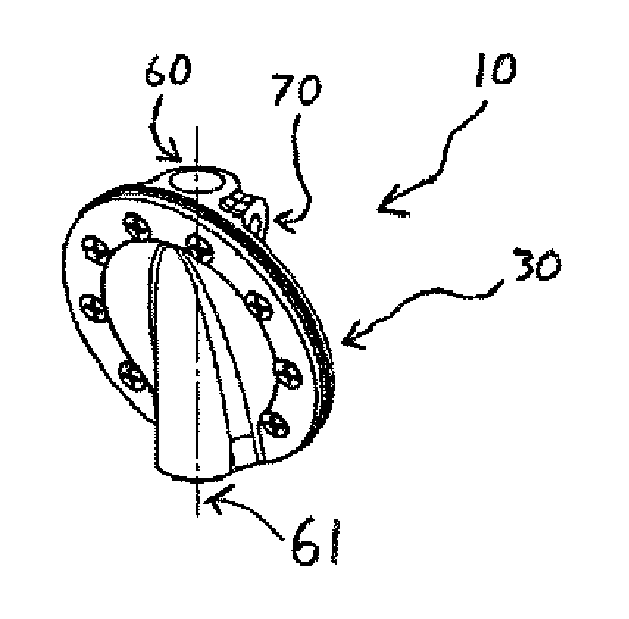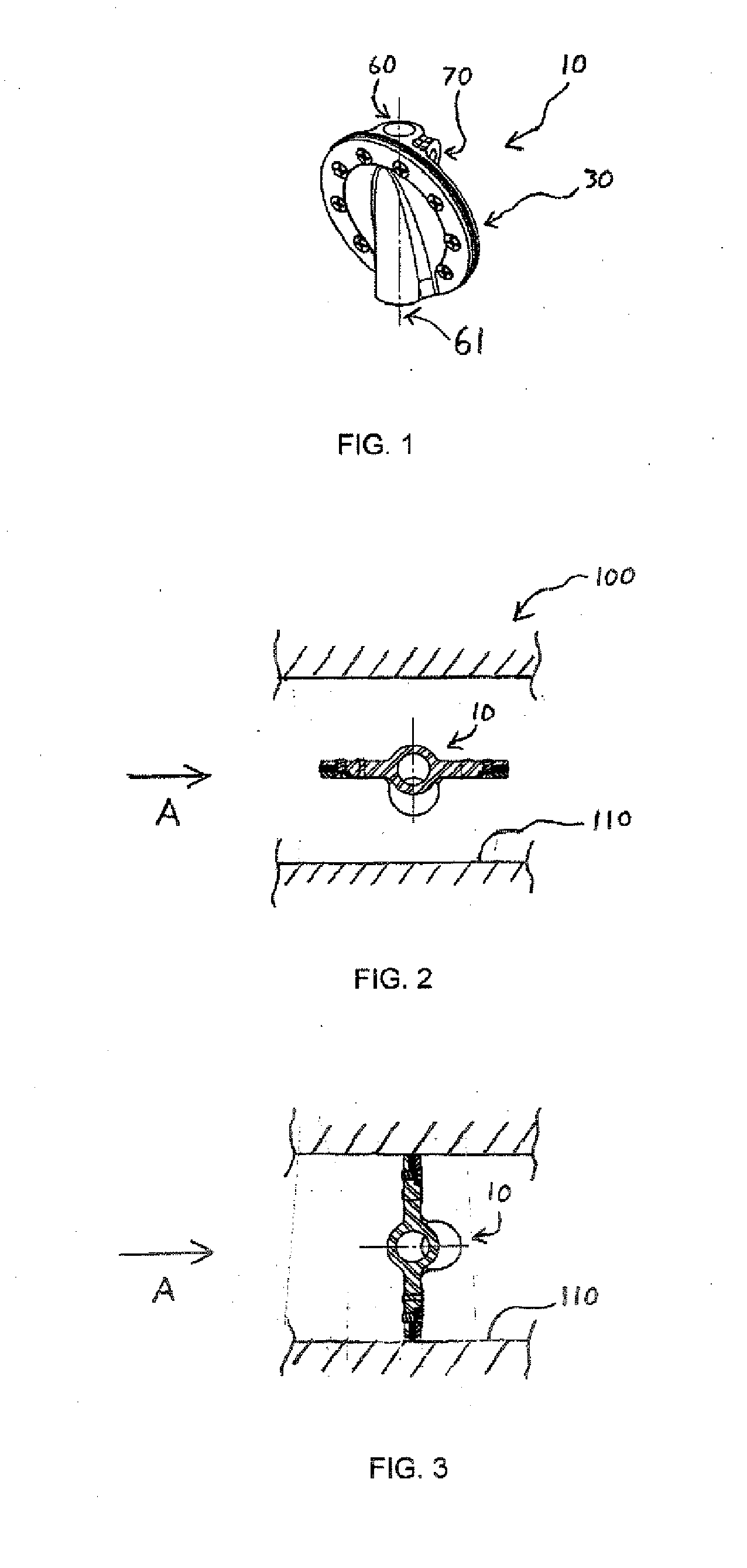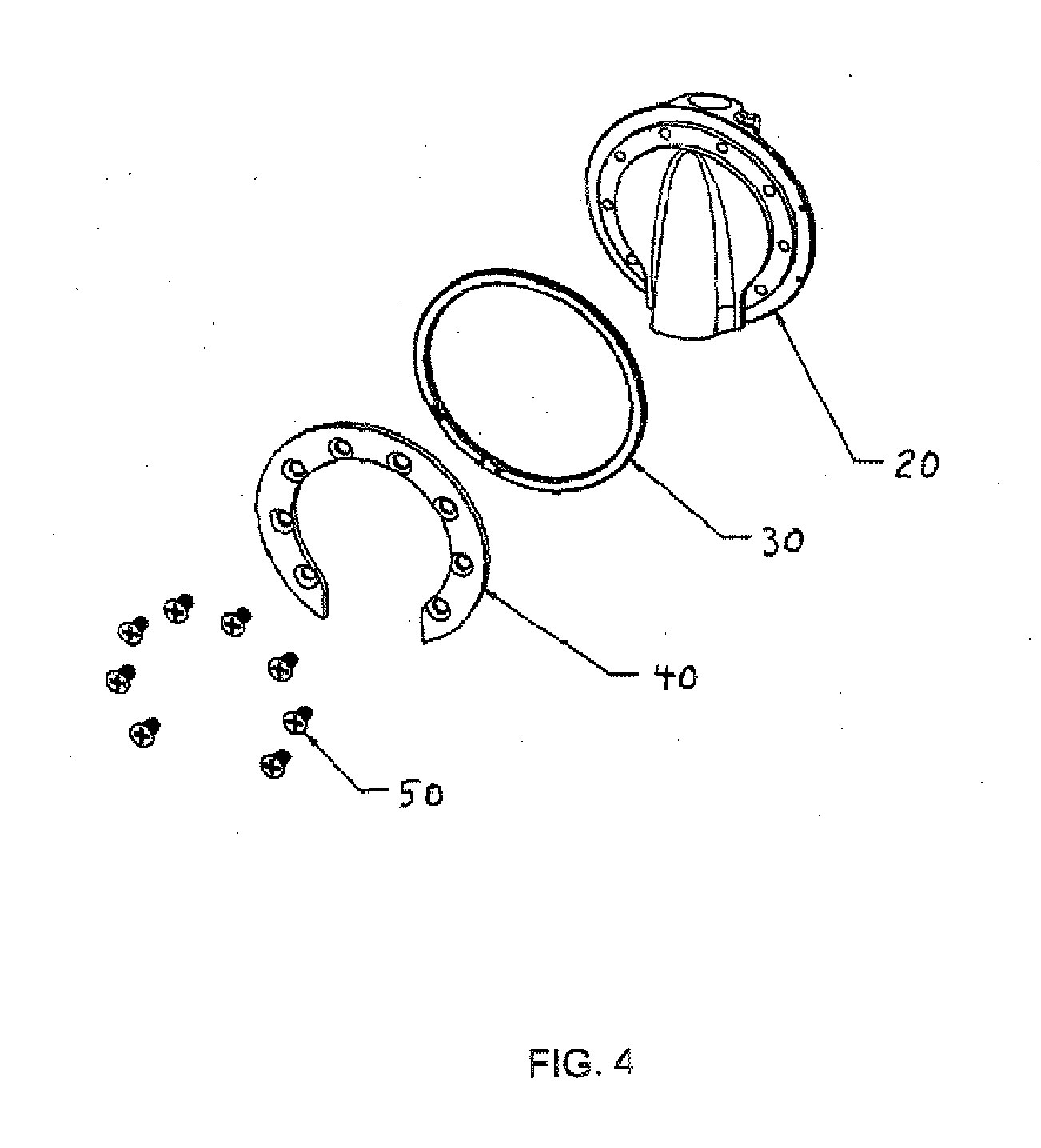Low friction butterfly ring
a butterfly valve and low friction technology, applied in the field of low friction butterfly valves, can solve the problems of wear on the outside edge of the rings and/or inside, further contact and friction between the rings and bores, etc., and achieve the effect of minimizing the leakage of the butterfly valv
- Summary
- Abstract
- Description
- Claims
- Application Information
AI Technical Summary
Benefits of technology
Problems solved by technology
Method used
Image
Examples
Embodiment Construction
[0043] Embodiments of the present invention will be described below with reference to the drawings.
[0044] According to an embodiment, a butterfly valve and butterfly valve assembly are provided in which the butterfly valve is adapted to operate without friction or substantially without friction when the butterfly valve is placed in a closed position.
[0045]FIG. 1 shows a perspective view of a butterfly valve 10, according to an embodiment. In the example shown in FIG. 1, the butterfly valve 10 includes at least one ring 30, and a passage 60 for a shaft (not shown) to support and rotate the butterfly valve 10 in a butterfly valve assembly (i.e. the butterfly valve 10 rotates about axis 61). In the example shown in FIG. 1, the butterfly valve 10 includes a receptacle 70 for a device to position the butterfly valve 10 on the shaft. The butterfly valve 10 can be positioned on the shaft with, for example, a set screw, pin, or other fastening device known in the art. The rings 30 used wi...
PUM
| Property | Measurement | Unit |
|---|---|---|
| diameter | aaaaa | aaaaa |
| diameter | aaaaa | aaaaa |
| pressure | aaaaa | aaaaa |
Abstract
Description
Claims
Application Information
 Login to View More
Login to View More - R&D
- Intellectual Property
- Life Sciences
- Materials
- Tech Scout
- Unparalleled Data Quality
- Higher Quality Content
- 60% Fewer Hallucinations
Browse by: Latest US Patents, China's latest patents, Technical Efficacy Thesaurus, Application Domain, Technology Topic, Popular Technical Reports.
© 2025 PatSnap. All rights reserved.Legal|Privacy policy|Modern Slavery Act Transparency Statement|Sitemap|About US| Contact US: help@patsnap.com



